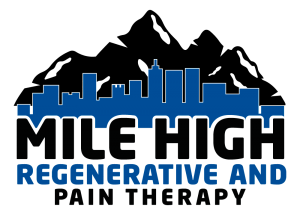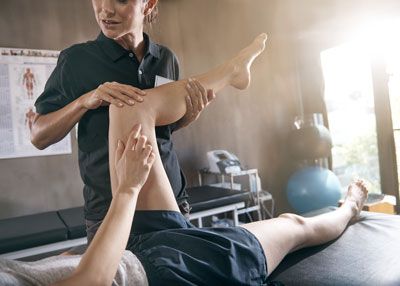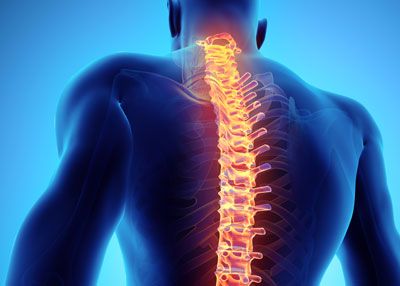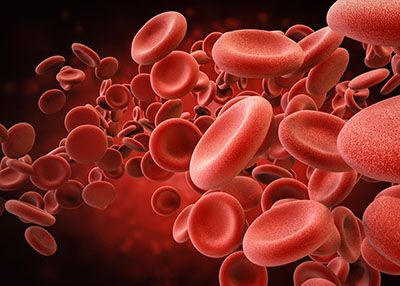
Regenerative Medicine
Mile High Regenerative and Pain Therapy is proud to offer the latest scientific-based regenerative therapies available and promises to promote and educate you on the most state-of-the-art therapies available. Dr. Brown has spent the past several years learning at conferences and workshops with the leading experts in regenerative medicine, and home study to learn and provide the latest cutting-edge therapies in regenerative medicine.
He has spent over a thousand hours learning this rapidly advancing field of medicine. The role of cellular components and regenerative medicine “stems” from their ability to transform damaged tissue into healthy, revitalized (new) tissue.
Please call (303) 945-4790 to schedule a consult with Dr. Brown to see what options would be best for you!
Regenerative Therapies include Prolotherapy, PRP, Bone Marrow Aspiration and Concentration (BMAC), amniotic and placental products, and other therapies such as A2M and exosome therapy. The goal of all regenerative therapies is to promote healing and restoration to damaged tissue, including joints, tendons, and ligaments. These therapies are injected under direct visualization using ultrasound of x-ray fluoroscopy and are a safe, non-operative treatment option for acute or chronic injury, as well as degenerative conditions such as osteoarthritis and degenerative disc disease.
Prolotherapy is defined by Webster’s Third New International Dictionary as “the rehabilitation of an incompetent structure, such as ligaments or tendons, by the induced proliferation of new cells.”
Regenerative therapies can help pain from injuries common to auto accidents, sports injuries, and normal degenerative conditions which cause damage to joints, tendons, and ligaments. This treatment can promote the body’s natural healing response at the area of injury or disease.
COMMON CONDITIONS TREATED
Normally injured joints, muscles, tendons, and ligaments go through a normal repair and healing process, which takes from four to six weeks. It is not unusual the process can be delayed in healing and cause ongoing neck, low back, or joint pain. Often, this pain can interfere with normal activities and prevent someone from enjoying their normal recreational or athletic events.
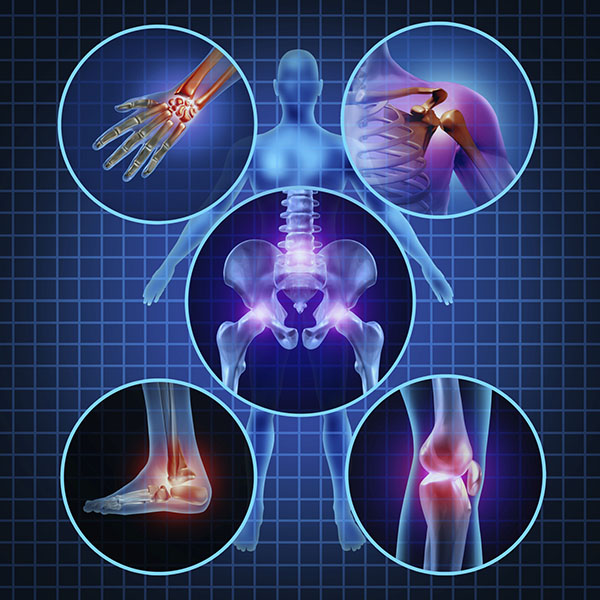
Click the areas of the body below. These represent conditions which can often lead to chronic pain.
Neck/Spine
TMJ
Cervical Spine
Arthritis, Instability, Whiplash, Disc Disease
Thoracic Spine
Arthritis, Instability, Rib Dysfunction
Lumbar Spine
Arthritis, Instability, Disc Disease
Spondylosis, Pain after surgery
SI Joint
Arthritis, Instability
Pubic Symphysis
Osteitis Pubis, Instability, Sports Hernia
Shoulder
Instability, Recurrent Subluxations
Impingement Syndrome
RTC Tendonosis/Tearing
Arthritis of GH Joint or AC joint
SLAP Injuries (Labral tears)
Elbow
Instability
Arthritis
Tennis Elbow (lateral Epicondylosis)
Golfers Elbow (Medial Epicondylosis)
Triceps Tendonosis/Tears
Wrist/Hand
Thumb Arthritis and Instability
Carpal Bone Instability
Carpal Tunnel Syndrome
TFCC Tears
Finger Arthritis
Hip/Pelvis
Instability
Arthritis
Pelvis Tendonosis and Pain
Hip Stabilizing Muscles/Tendons
Chronic IT Band Tendonosis
Chronic Hamstring Strains/Tears
Knee
Arthritis
Ligament Instability and Tears
Peripheral Meniscal Tears
Runner’s knee (tendonosis)
Osgood-Schlatter’s Disease
Pes Anserine Tendonosis
Ankle/Foot
Arthritis
Instability/Chronic Sprains
Sinus Tarsi Syndrome
Achilles Tendonosis/Tears
Joint pain from arthritis and degenerative disc disease of the spine can slow one down take away the ability to exercise and enjoy life. Medications and steroid injections are often given to treat these injuries, but they may slow or stop this healing process. Surgical options should be a last resort for chronic pain and arthritic conditions due to side effects and failure fates after surgery.
It is not uncommon for patients after injury or with chronic degenerative conditions, such as osteoarthritis or DDD, chronic pain can occur. This can affect daily life, including difficulty performing job tasks, decrease participation in recreational activities, and make activities of daily living difficult and painful.
Prolotherapy injection techniques have been used to treat pain, degenerative conditions, and injuries for over 60 years with positive results.
Regenerative therapies can provide pain relief and return to normal function with healing and treatment of the injured or degenerated body part. Ultimately, these therapies can help restore previous activity levels and reduce medication use.
Treatment produces long-lasting relief through stimulating the body’s natural healing response. Most other types of treatment provide only temporary relief by covering up the symptoms and not treating the cause. Surgery is often not needed if the area is treated appropriately by an experienced physician.
Multiple encouraging studies have been published since the Prolotherapy pioneer George Hackett, M.D. proved that strengthening damaged tissue relieves pain. Every year new and encouraging studies with Prolotherapy, PRP and Stem Cell injections confirm what we see in our patients every day. This is the future of Orthopedic Medicine!
HOW DOES IT WORK?
When injuries occur, the injured tissue may have a delayed healing response. This is often compounded by poor blood supply and reflex muscle spasm which may reduce the blood supply further and limit the healing and growth factors needed for repair.
When this delayed healing occurs, tendons and ligaments have compromised function and can cause joints to poorly function and cause pain. Delayed healing can also allow excessive movement of the joint leading to pain, muscle spasms, and eventually post traumatic arthritis.
Arthritis occurs in the joints and spine as a result of instability of ligaments and tendons supporting them after injury. Regenerative therapies can help to heal and strengthen damaged and degenerative tissues and decrease the progression of pain, degeneration, and aging.
It is common for muscles to spasm in response to injury. This can cause the patient to feel tight, stiff, and have painful muscle spasms. The muscles become tight and painful as they try to compensate for the weak and damaged underlying structures. Spasm in the muscles decreases the blood flow and nutrient delivery to the tissue, further contributing to slow healing and degeneration of tendons and further injury to the joint or surrounding tissue.
Regenerative therapy can help to reduce this tissue damage and promote healing and improvement in function and reduced pain. Dr. Brown would welcome the opportunity to help you learn more about these options and how they can reduce your pain and improve your quality of life and function.
We can promote repair and healing of injuries and reduce further degeneration with regenerative therapy. Our goal is to promote healing and improve function.
THE THREE STAGES OF HEALING
When the injured areas are injected, a reaction begins, starting a three-stage healing process. The injections initiate the first stage (Inflammation). Stages two (Fibroblastic) and three (Maturation) will follow automatically. Click the different stages below to learn more.
-
- Increased blood flow, swelling and discomfort as the healing process begins.
- Immune cells remove damaged and unhealthy tissue from the treated area.
- Occurs during the 1st week
In stage one, the body sends in macrophage cells, which help to clean up the debris and damaged areas. These cells respond as if another injury has occurred, resulting in controlled inflammation and increased blood flow. This process takes about a week.
-
- Swelling and pain begin to subside.
- New blood vessels form with an improved blood and nutrient supply.
- Tissue repair cells (fibroblasts) form new collagen, repairing the injured and unstable tissue or joint.
- Around day 3 and continues for 6 weeks
In stage two, the body begins the process of repair and healing. Repair cells called fibroblasts, which are deficient in the injured and degenerated tissue, arrive to the scene during this stage.
Fibroblasts increase in number at the sites of injection over the course of four to six weeks, and secrete a substance called collagen, which is a very strong and relatively inelastic substance. This newly formed collagen makes the ligaments thicker, denser and stronger, providing more support to the joints where the ligaments anchor or attach to bone.
Studies have shown that the strength of the injected ligaments can increase up to 40% above normal. Pain and muscle spasm is decreased as stability is increased.
-
- New blood vessels mature.
- The tissue now becomes stronger with more organized and healthy fibers.
- Pain subsides.
- Collagen density and tissue strength are increased.
- Continues from week 6 to 18 months.
In stage three, the newly formed tissue continues to mature for one to three years. Improvement, therefore, may continue for up to three years after the last treatment.
If, during the three stages of the healing process, anti-inflammatory drugs, ice, and/or immobilization are used to reduce pain and inflammation, complete and normal healing will be inhibited.
Most people are taught that inflammation is bad and don’t realize that, without inflammation, no healing will occur.
We can strengthen the joints, ligaments and tendons and decreases the pain by stimulating the body’s own repair and healing process. There is no covering up the pain as tissues heal naturally and become stronger, without forming scar tissue. Several treatments spaced apart by about two to six weeks are usually required to get the full benefit. Each treatment builds on the previous until the desired outcome is obtained.
